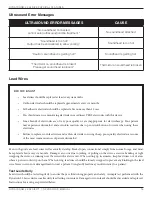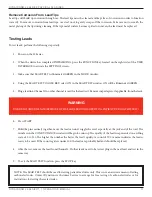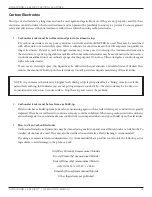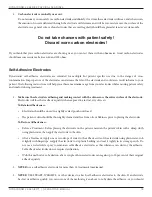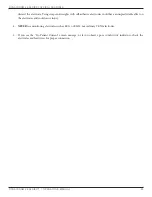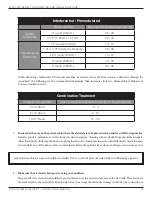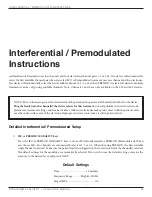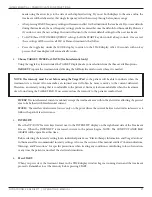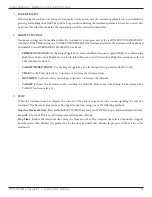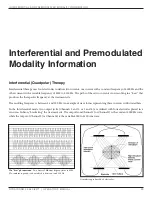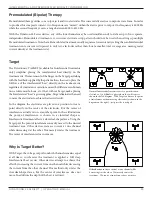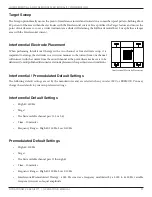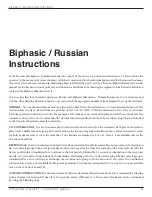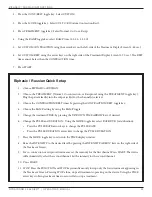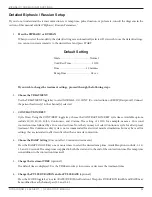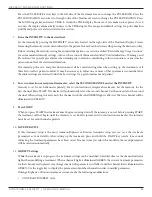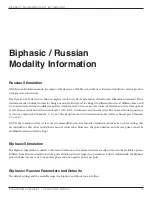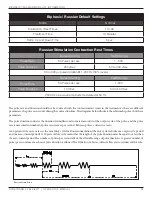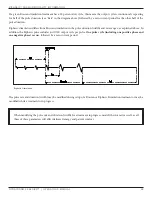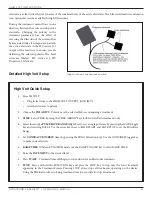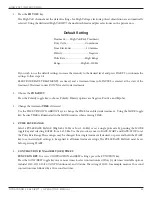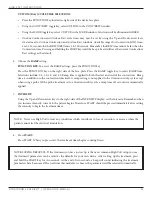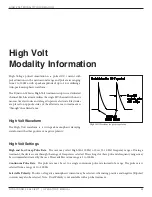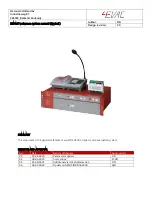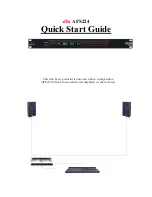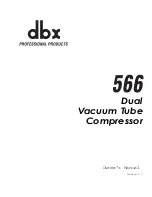
InTerferenTIal and PremodulaTed modalITy InformaTIon
DYNATRON® 25 SERIES™ | OPERATOR’S MANUAL
30
Premodulated (Bipolar) Therapy
Premodulated therapy utilizes one output jack and two electrodes. The current delivered is a composite wave form. In order
to produce this composite current, two Frequencies are “mixed” within the device prior to output. One frequency is 4000 Hz
while the second frequency covers a range between 4000 to 4150 Hz.
With the Dynatron 25 Series devices, any of the four channels may be used simultaneously to deliver up to four separate,
independent Premodulated treatments. A crisscross electrode setup pattern should not be used when setting up multiple
Premodulated treatments. Note that a Premodulated treatment usually requires a lower intensity setting than an Interferential
treatment since current is dispersed to only two electrodes rather than four (a smaller total coverage area means greater
current density at the treatment site).
Target
The Dynatronics’ TARGET (available for Interferential treatments
only) simplifies placing the interferential beat directly on the
treatment site. The movement of the finger on the Target paid along
with the feedback supplied by the patient allows the user to place the
full force of the interferential “beat” directly on the treatment site
regardless of conductance variations caused by differences in human
tissue (skin, muscle, bone, etc.) that, without Target, make placing
the Interferential “beat” a guessing game. Target eliminates the need
to move the electrodes to achieve the desired result.
In the diagram the electrodes are placed in a position to treat a
point directly in the center of the electrodes. But the center of
interference actually occurs at another point. In these illustrations
the point of interference is shown in a cloverleaf shape as
Interferential treatment affects a cloverleaf-shaped area. Using the
Target pad, the point of interference in easily moved to the desired
treatment area. Other devices increase current at one channel
while decreasing it at the other. This merely rotates the treatment.
The center of interference does not move.
Why Is Target Better?
With Target, the voltage output from both channels remains equal
at all times; so wherever the treatment is applied, a full, deep
Interferential beat occurs. Other devices attempt to achieve this
effect by increasing the current from one channel while decreasing
the current from the other channel. This method only rotates the
cloverleaf-shaped area, but the center of interference does not
move. In addition, the depth of the beat is reduced.
Normal Interferential currents cross at a point between
electrodes. It is difficult to guess where they will cross as
shown in the left diagram. With Target, you move the point
of interference without moving electrodes (as shown in the
diagram on the right)—just press the touch pad.
Other devices increase current at one channel while
decreasing it at the other. This merely rotates the
treatment. The center of interference does not move.

